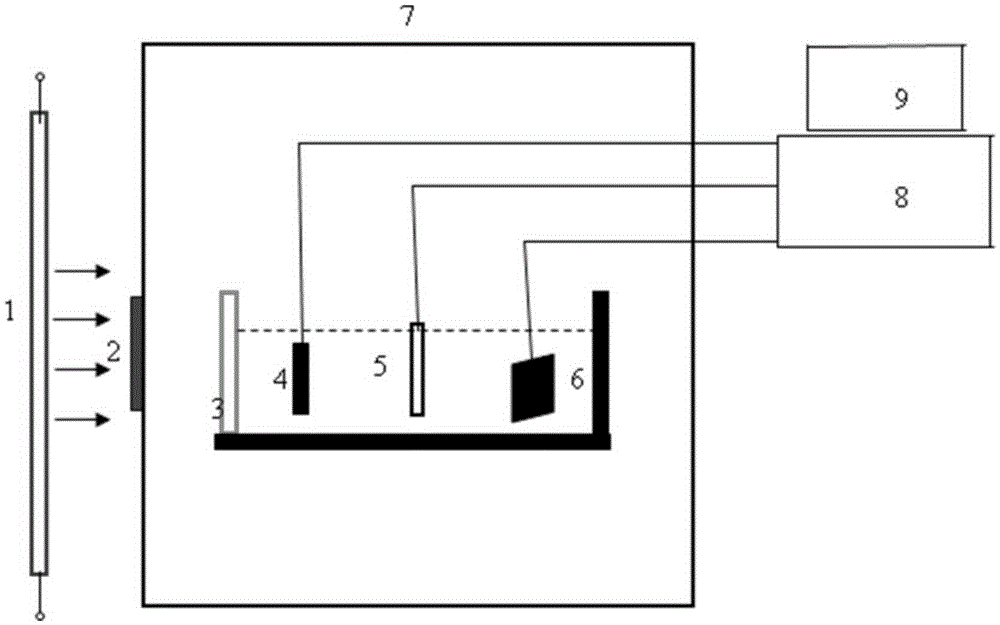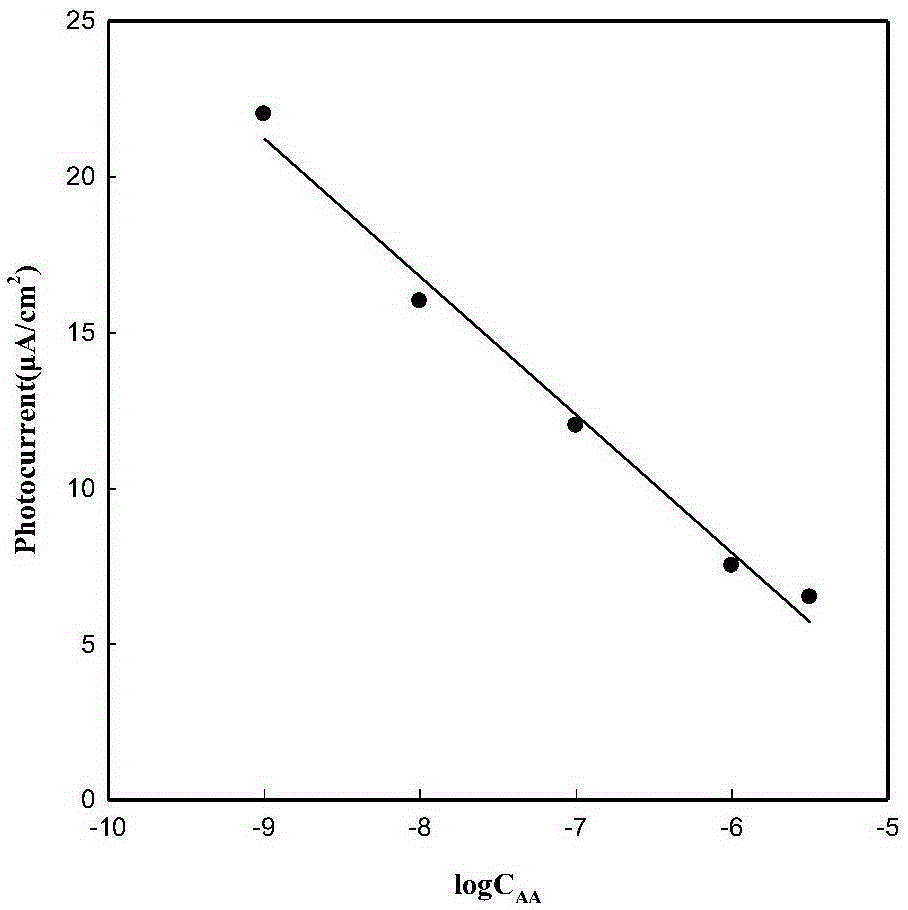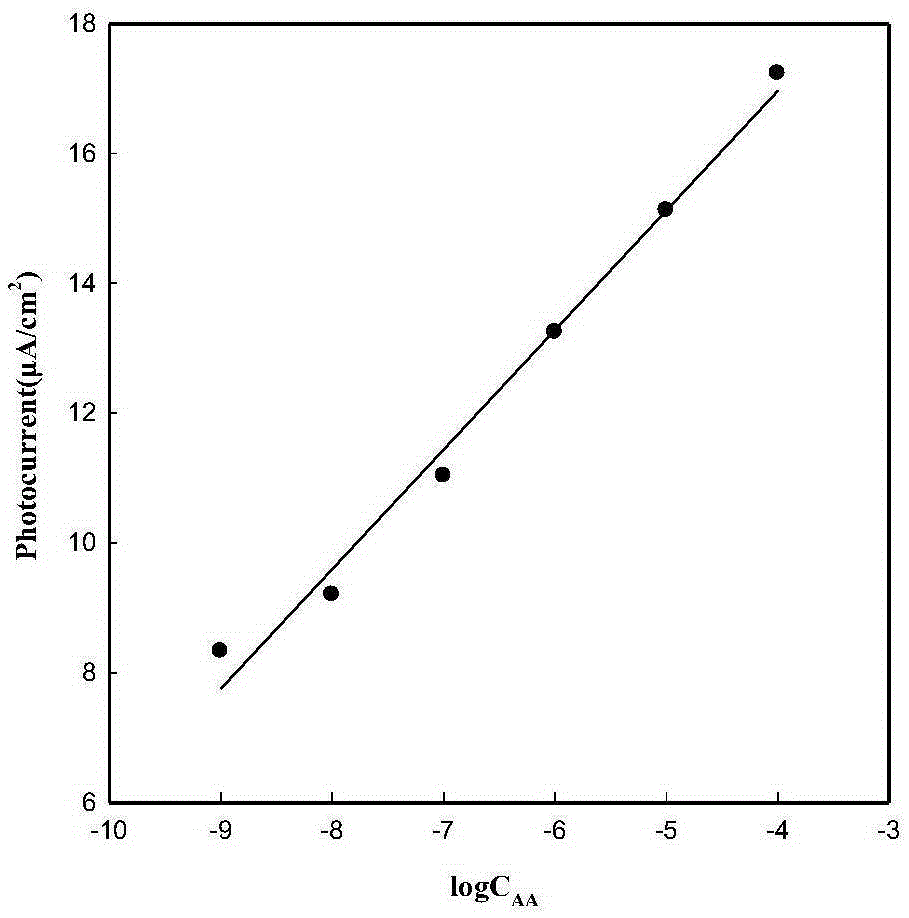Device and method for detecting ascorbic acid through dual-wavelength
An ascorbic acid and dual-wavelength technology, applied in the field of electrochemistry, can solve the problems of selectivity and accuracy to be improved, and achieve good electrochemical performance, high oxygen evolution overpotential, and improve accuracy and reliability.
- Summary
- Abstract
- Description
- Claims
- Application Information
AI Technical Summary
Problems solved by technology
Method used
Image
Examples
Embodiment 1
[0051] Such as figure 1 Shown, a kind of dual-wavelength photoelectrochemical detection device and system include (1): dual-wavelength light source; (2): light valve; (3): light window; (4): photosensitive electrode; (5): reference Electrode; (6): platinum electrode; (7): dark box; (8): LK2005 electrochemical workstation; (9): computer.
[0052] (1) The dual-wavelength light source excites the photosensitive electrode. The light source is located outside the dark box. During the experiment, the light source is in the power-on state. By controlling the opening or closing of the light valve, the photosensitive electrode is controlled under light or dark conditions.
[0053] The material of the light window (3) on the side receiving the light of the detection pool is optical quartz glass, because it can pass through the light of ultraviolet wavelength.
[0054] The photosensitive electrode (4), reference electrode (5) and platinum electrode (6) are placed in the detection cell, ...
Embodiment 2
[0069] The difference from Example 1 is that the excitation light source of the present invention has wavelengths of 240 nm and 400 nm. Under the above wavelength, it can realize the detection of the concentration of ascorbic acid and uric acid.
PUM
 Login to View More
Login to View More Abstract
Description
Claims
Application Information
 Login to View More
Login to View More - R&D Engineer
- R&D Manager
- IP Professional
- Industry Leading Data Capabilities
- Powerful AI technology
- Patent DNA Extraction
Browse by: Latest US Patents, China's latest patents, Technical Efficacy Thesaurus, Application Domain, Technology Topic, Popular Technical Reports.
© 2024 PatSnap. All rights reserved.Legal|Privacy policy|Modern Slavery Act Transparency Statement|Sitemap|About US| Contact US: help@patsnap.com










